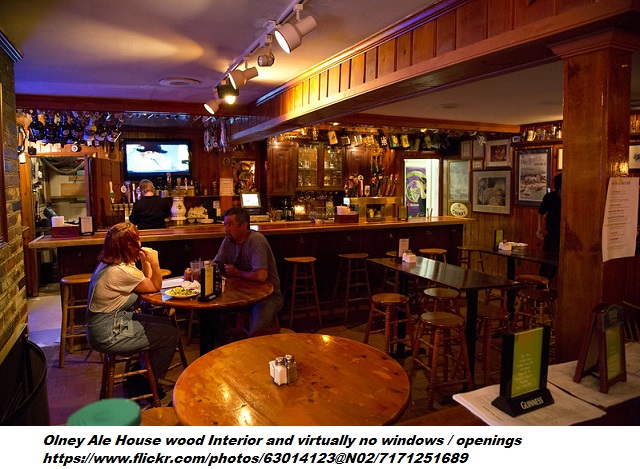Post 128 - by Gautam Shah
.
.
Acoustical properties of small rooms differ considerably from large
spaces such as the auditoriums, concert halls, cathedrals, lecture halls,
hospital wards, etc. Some of the most important elements that
differentiate the quality of sounds are volume and depth or width of
the space. In an average space original sound travels more or less
straight to the listener, whereas the reflected sound must travel
towards an edge or boundary, and then get bounced back to the
listener. Such delayed reflections heard along with the original source
sound cause of enrichment of sound and in some cases irritant
echoes.
Size and Shape of a room affect the sound perception in a room. ‘In a
room with parallel walls (almost all rooms), the sound gets a caught
bouncing back and forth between the walls. Some sound waves are
cancelled by their own reflections while others are reinforced’. Room
with slightly askew walls, drastically reduces the redundant reflections
between walls. Ancient Greeks found that rooms with the ratios of 2.62:
1.62:1 sounded universally good.
When an original audio source is recognized, one turns the head to that
source. Head turning helps in tuning the source and also for eyes to
locate the original source. Such audio source location and its visual
perception create a psychological sense of adequacy. In very large
volume spaces the original sound may become feeble at the peripheral
areas, allowing a surface bounced sounds to dominate the listening.
- In a large room, first-arrival times of the early reflected sound are typically on the order of 50-80 ms after the direct sound.
- For small rooms, the first-arrival times of the early reflected sound are few ms after the direct sound.
Reflections often obscure the true source of a sound and reduce
intelligibility. This effect is more pronounced in small rooms than
larger ones because the walls are closer together, and so the reflections
are stronger in strength, but not delayed enough to produce sonority.
The strength of the reflections depends on the density and rigidity of
the edge surfaces. Indeed, the worst environment for a home studio is
a basement because cement walls are more rigid than partition or thin
body walls. Thick walls around small space rooms improve the acoustic
isolation, but thin partitions allow lower frequencies to pass through to
get absorbed within the body or expended in vibrating the thin body
mass.
 |
| Felix Mendelssohn's Leipzig study |
In the natural world without walls or ceilings, the First Significant Reflection will always come from the ground. We subconsciously use the FSR to determine distance from an object. For example a person speaking to a listener from 2' distance, the initial sound will arrive about 2ms while the FSR will be about 11ms. Thus effective FSR is 9ms (11-2=9ms) to the listener. If the speaker is 10' away, the FSR will be about 5ms from the listener's perspective.
 |
| Singing for self > Miranda sings Wikipedia pic Attribution: Gage Skidmore |
Small rooms like a bathroom have small sizes, and smaller volumes.
Such spaces include an inner sanctorum of temples, confession booths,
personal prayer rooms, private offices kitchens, study rooms, store
rooms and telephone kiosks. These rooms are used for personal
meditation, prayers, recitation, singing, self-talk or person to person
(one to one) voice communication (directly or through telephony).
Beyond the two qualitative characteristics of small spaces such as
smaller size and smaller volume, it is the Nature of furnishings that
affects the feel for sound. A bathroom like space is bereft of any soft
surfaces, whereas study rooms are over furnished to make them cozy.
Heavy furnishings, draperies, thick walls form a sound absorbent
environment. Here the richness of the reflected sound is lost.
Small spaces allow multiple reflections from architectural boundaries
and enrich the sound of one's voice. Small rooms often provide the
‘acoustic intimacy’ but do not have ‘acoustic grandeur’ of very large
spaces. Large rooms have distinctive reflections which help us
comprehend our location, the direction and distance of objects etc. In
large rooms there are likely to be few surfaces that are horizontally
askew, vertically inclined and surface quality wise irregular so some
blurring of the reflections is inevitable.
 |
| Chamber music |
A highly isolated space (cut off through high insulation) cuts-off the
low frequency ‘interference’ of outside noises like traffic, wind, rustles
of the leaves, etc. The internal low frequency noises of the room cannot
be suppressed in absence of absence of background noises. As a result
sounds our own body movement, rustling sounds of clothes or book
pages, fan or air conditioner’s hiss etc. are over emphasized and become
disturbing.
.
.







.jpeg.jpeg)











